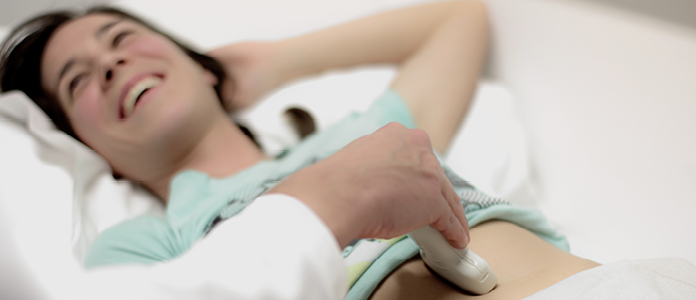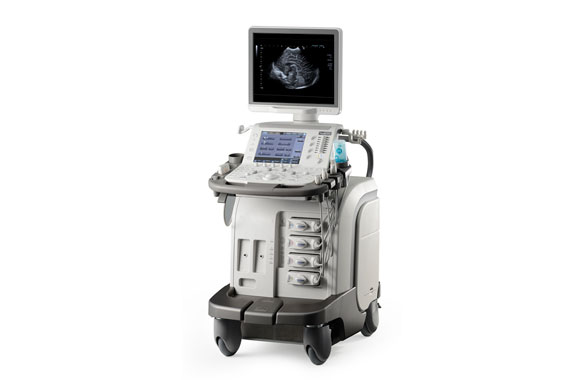Sonography is the use of ultrasound for imaging. The ultrasound waves are generated and measured with piezoelectric crystals in the transducer. The different tissues of the human body reflect and scatter sound waves (e.g. liver or urinary bladder) to different degrees; images (e.g. abdominal ultrasound) are calculated from the reflected signals. If the ultrasound waves hit a moving surface (such as blood cells in flow), they are reflected with a different frequency (= Doppler effect).
With a so-called Doppler sonography, both flow direction and flow velocity of the blood flow in blood vessels can be determined. The mobility of organs, joints and tendons can also be displayed and assessed in real time with the active assistance of the patient.
Ultrasound examinations do not use X-rays, so they can be used without hesitation even in pregnant women and children. Of course, you can choose to have your sonography examination performed by Dr. Sailer or Dr. Peloschek (all organs) or Dr. Hoffmann (thyroid, elastography).

- Sonography thyroid gland
- Vaginal sonography
- Sonography uterus
- Sonography salivary gland
- Sonography scrotum
- Sonography shoulder
- Sonography prostate
- Sonography kidneys
- Sonography of the lymph nodes
- Sonography incl. elastography
- Sonography inguinal
- Sonography testicle
- Sonography hernias
- Sonography urinary bladder
- Sonography neck
- Sonography carotid artery
- Sonography breast
- Sonography abdomen
- Residual urine determination
- Elastography thyroid gland
- Doppler sonography pelvic-leg arteries

